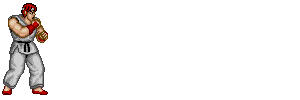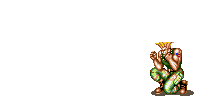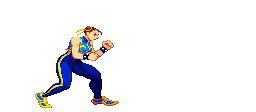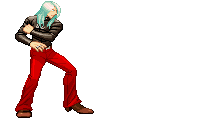| This article may or may not be a stub, but it's definitely missing something. Specifically: Expand the history section, particularly the Street Fighter Alpha series section. You can help the Street Fighter Wiki by giving us what we need. |
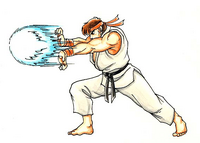
Street Fighter II artwork of Ryu firing a Hadoken.
A projectile, also generally referred to as a fireball, is a form of attack in various games, in which the user throws something - more often than not a shaped form of energy - at the opponent.
Description
The exact definition of a "projectile", as determined by the game engine, is "any attack that creates a moving hitbox separated from the character who performed the attack". Included within this is the ability to "cancel out" another such attack when two are onscreen at the same time.
Various types of projectile moves exist in the Street Fighter series, and allow users to damage foes from a distance. Depending on the projectile itself, it can also serve many other purposes, such as controlling space and pressuring opponents. However, projectiles can be jumped over somewhat easily, depending on their orientation and positioning (which may require other options to avoid them as well).
Since projectiles are a hitbox separate of the user and thus technically disjointed in a unique fashion compared to weapon-based hitboxes, they do not generate any physical pushback, meaning that a thrower of a projectile will not suffer any pushback themselves should they be used at close range on a cornered target on hit or block; this can normally be either a good thing or a bad thing depending on the context and situation.
In other games, some projectile moves may be in the form of stationary ones that appear in a sudden area depending on the button used (and disappear after a brief moment if left untouched), while there exist moves that count as "energy" attacks (with a disjointed hitbox) that can both count as projectiles and negate projectiles as well. Overall, there exists a variety of projectile moves, as well as "beam" moves and several other variants with different properties.
In other fighting games, a vast number of projectiles often have their own durability rating; projectiles from Super Combos often would have one of their "hits" be taken off if they collided with another projectile, which may or may not completely negate them depending on the opposing projectile thrown. Thus, the typical projectile clashes/wars (or "fireball wars") may have varying results depending on the game and projectiles thrown in question.
In several prior fighting games, single copies of a projectile thrown from one person cannot be increased on the screen unless the prior projectile leaves the screen first or is destroyed via connecting/being blocked, preventing a form of spamming (not counting projectiles thrown from the opposing character). However, later fighting games can increase the number of projectile copies on-screen thrown by a single character.
History
Street Fighter
The Street Fighter series' first projectile moves were introduced with the very first game of the series. Ryu, Ken and their Hadoken would go on to become one of the series' many icons. Geki and Sagat, the final boss, were the only other fighter with projectiles, using a Shuriken throw and the famous Tiger Shot respectively. Sagat would become playable in single-player modes from Street Fighter II on.
Street Fighter II series
With the introduction of more characters into the series, several more projectile moves and users appeared, and opened up more varied combo tactics as a result.
The Hadoken played a major part in the divergence - both in the story and in gameplay - of Ryu and Ken. Ryu was shown to have gained more proficiency in the 'Hado' principle of his style, and thus was able to use more variants of the technique, including the Shakunetsu Hadoken and the Shinku Hadoken, his first and "trademark" Super Combo.
Street Fighter Alpha series
The mechanics for projectiles in the Street Fighter Alpha games made them much weaker within that series, though they were still quite useful in combos. The introduction of Rolento and Cody saw newer variations of projectiles not reliant on ki, making the use of small ordinance such as knives or even rocks.
Street Fighter III series
With the introduction of the parry mechanic, all users (particularly non-projectile users) gained an advantage against projectiles, being able to nullify them completely, as opposed to jumping, or blocking (and thus taking chip damage).
In addition, from this series on, the EX Special versions of most projectile moves hit twice, sometimes via firing two projectiles at once.
Crossovers

In most crossovers, projectiles are much larger, as are projectile-based Hyper Combos; in the Marvel vs. Capcom series the latter often take on a more beam-like appearance. Not to mention, several projectiles from this series onwards tend to have their own durability statistic; some projectiles can take longer to dissipate than others, while some beams despite passing through to the opponent, will still clash with a normal projectile with no damage to both opposing sides. Some projectile copies can also be thrown out without needing to have the prior copy leave the screen first.
In Street Fighter X Tekken, one of the exceptions to the above, many Tekken characters are given moves that allow them to "sidestep" and avoid projectiles; this is due in part to the Tekken series' nature as a 3D fighter, and the relative lack of projectile users (and, therefore, lack of a proper defense besides blocking and/or the aforementioned sidestepping).

